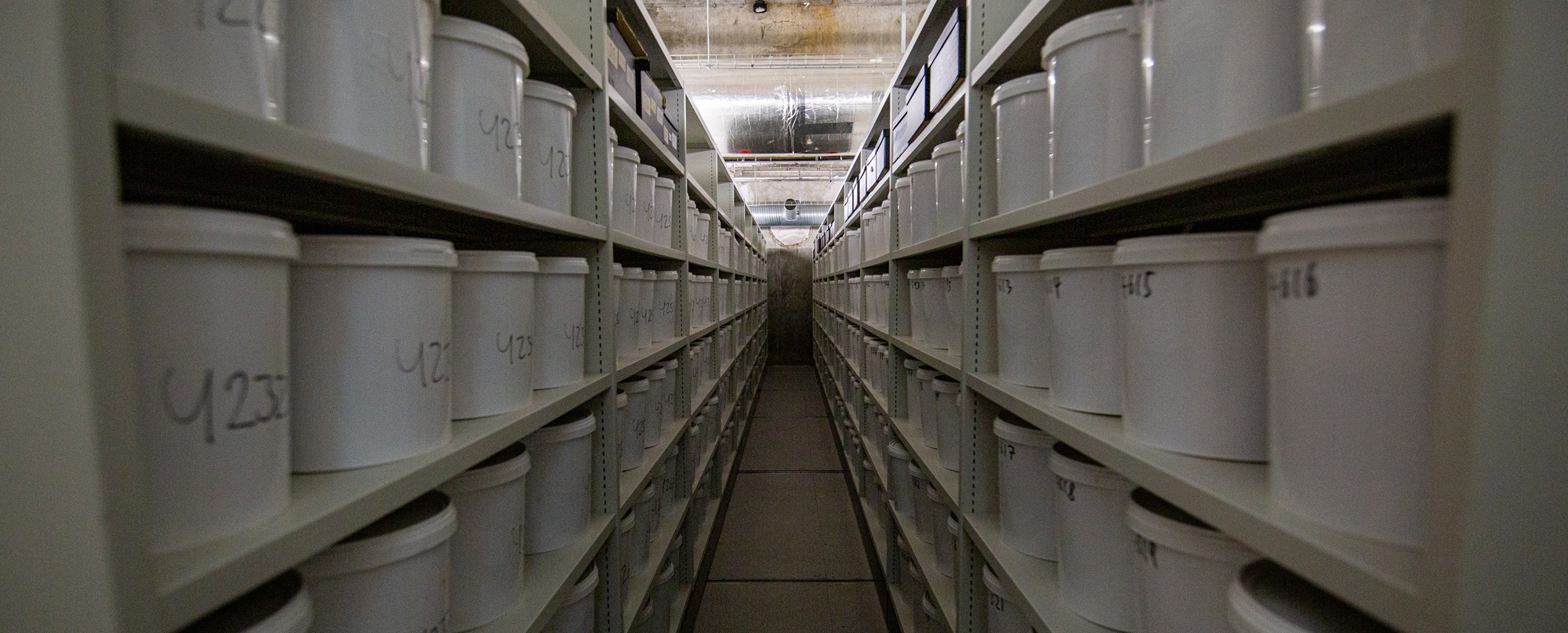
Q&A: The Brain Collection at SDU
Did you know that more than 9,000 brains are stored in the basement beneath the campus? Learn more about SDU’s brain collection in this week’s Q&A.
People have been talking a bit about the large brain collection at SDU. Is it still hidden away in the basement, or where is it now? And why is it there? Does the Faculty of Health Sciences have any other exciting collections?
Dear colleague,
Thank you for your enquiry.
The brain collection is utterly fascinating, and the mere thought that more than 9,000 brains are locked away in the basement beneath the campus gives us a bit of a chill here at the editorial team.
It’s indeed stored in the basement of the “old” campus in Odense, where it was moved in 2018. According to Martin Wirenfeld Nielsen, consultant and head of the brain collection, there are no plans to relocate it again.
Here’s a little more about why it’s here and what it’s used for:
The brain collection, which is the largest of its kind in the world, arrived at SDU in 2018 when the Psychiatric Hospital in Riisskov, near Aarhus, closed as part of the relocation to the new Aarhus University Hospital in Skejby.
Between 1945 and 1982, a total of 9,479 brains were collected, removed from the skulls of psychiatric patients who passed away during hospitalisation. At the time, psychiatric patients also included those suffering from dementia.
The brains were placed in plastic buckets filled with formalin, where they remain stored to this day.
Questions & Answers
Discover everything you want to know about SUND, from details about the buildings and surroundings to its relationship with the rest of SDU and the latest faculty news. If you have any queries, don't hesitate to reach out to us at SUND Communication. We'll pick the most relevant questions to answer, ensuring that as many people as possible benefit from the information.
Access to the collection
The brain collection is part of the research unit BRIDGE under the Department of Clinical Research, which can be contacted by researchers seeking access to use the collection. Otherwise, the collection is not accessible.
Where do the brains come from?
- The brains come from individuals who died and were autopsied at what were then known as Danish state hospitals, which until 1959 were called asylums.
- In addition to patients with psychiatric diagnoses, there are also brains from patients with dementia.
- There were 10 state hospitals in Denmark. More than 2,000 of the brains come from the state hospital in Middelfart, so in a way, they’ve “returned home” to Funen with the relocation of the collection.
- At the time the brains were collected, there were no laws in place ensuring that the relatives of the deceased gave their consent.
In 1982, the collection was closed and left to gather dust under the psychiatric hospital, but in 1990 it was brought back into use – sparking debate in the Danish Council of Ethics. The question arose: if researchers discovered hereditary mental illnesses in the brains, should the relatives be informed?
The Council ultimately decided that the collection could be used, albeit with caution.
And it was. Since then, it has contributed invaluable knowledge to studies on schizophrenia, dementia, and more. That is, until the collection was nearly discarded... and then the uproar began.
Researchers both in Denmark and abroad protested at the idea that the Aarhus authorities could even consider disposing of such a valuable collection.
After much deliberation, SDU and OUH stepped in with a rescue plan, and the collection was moved to Odense, where it is now once again being used for research. You can view photos of the collection in the gallery below.
In upcoming newsletters, we’ll be taking a closer look at other exciting collections at SDU. If you know of a collection (large or small) that you'd like to see featured or showcase, please contact us at sund-input@health.sdu.dk.